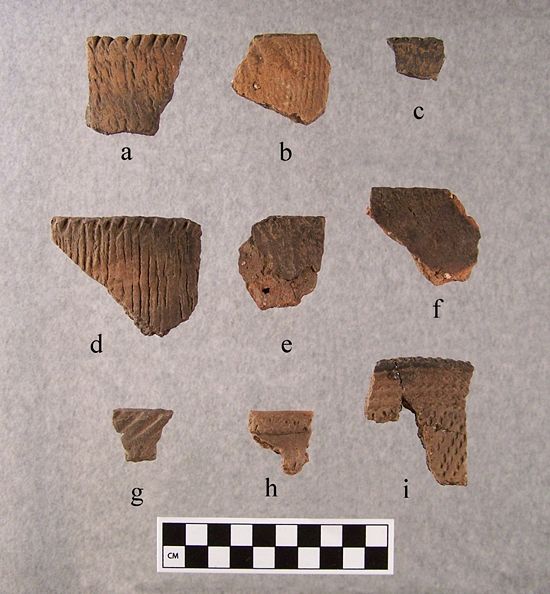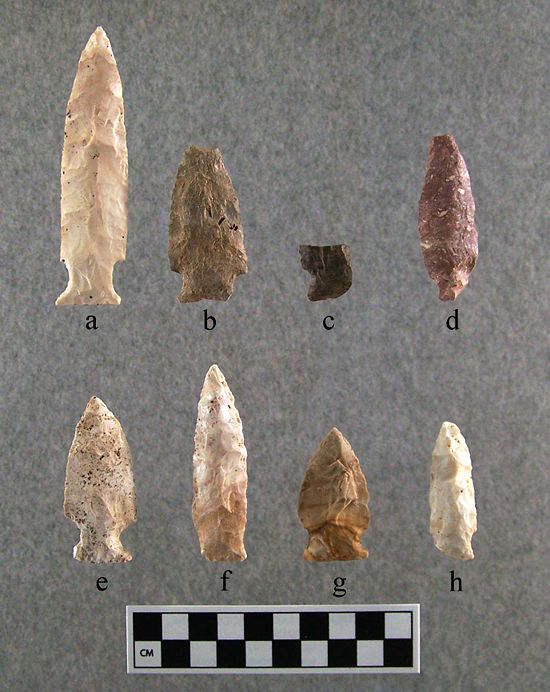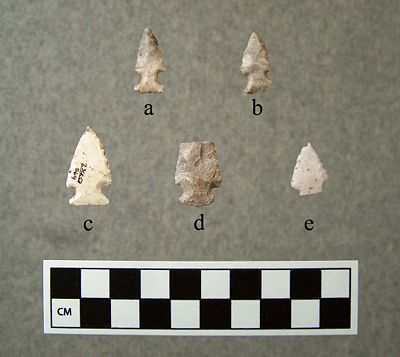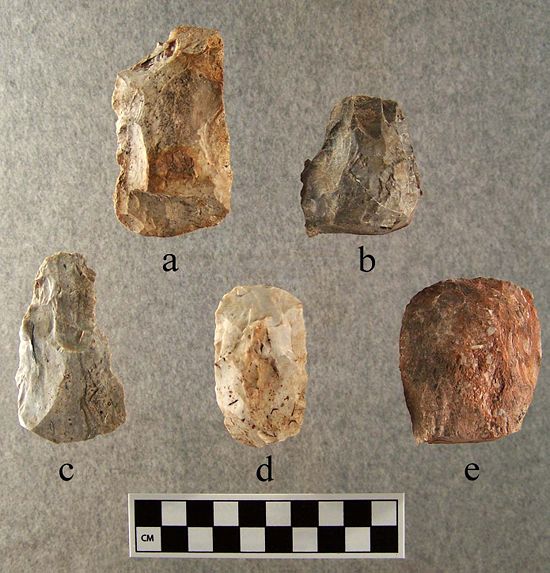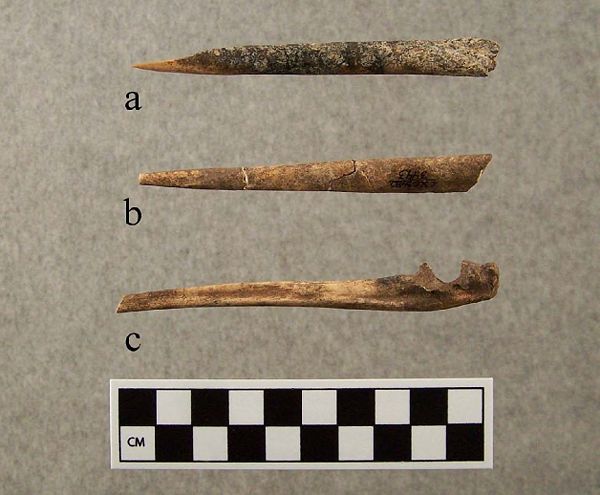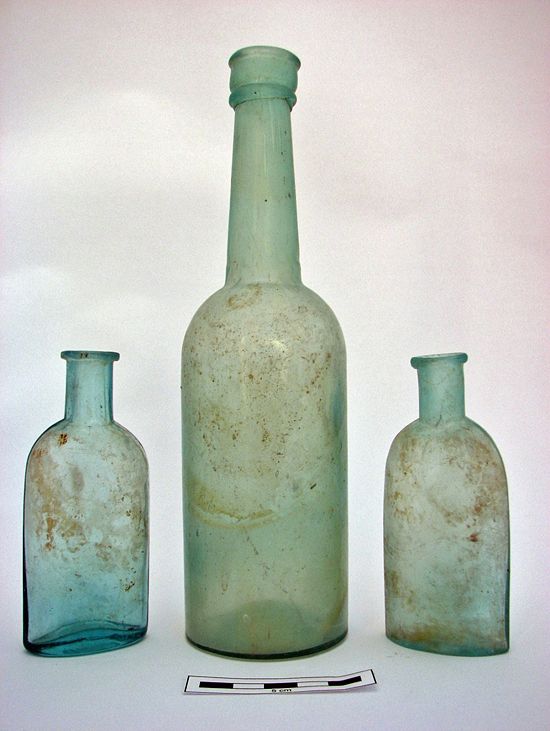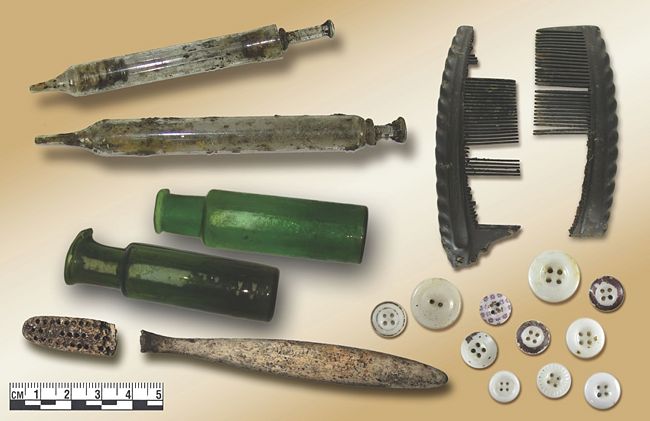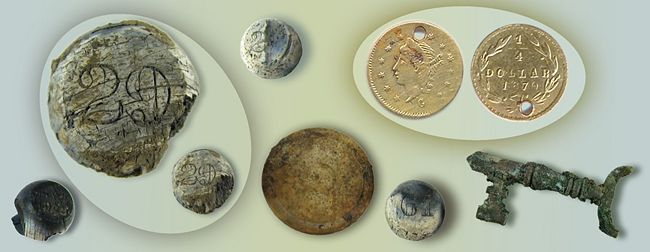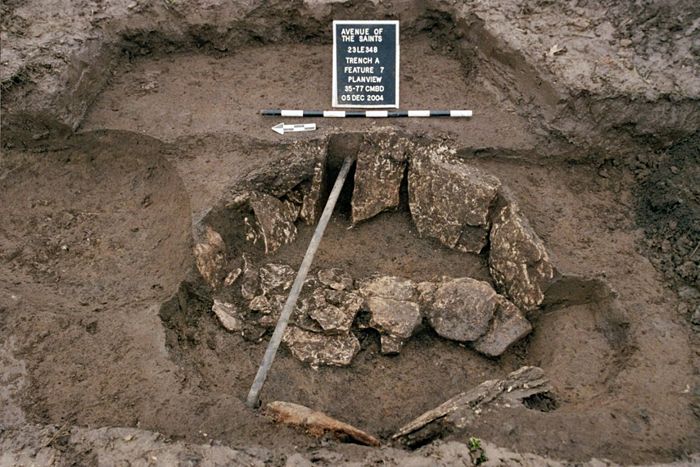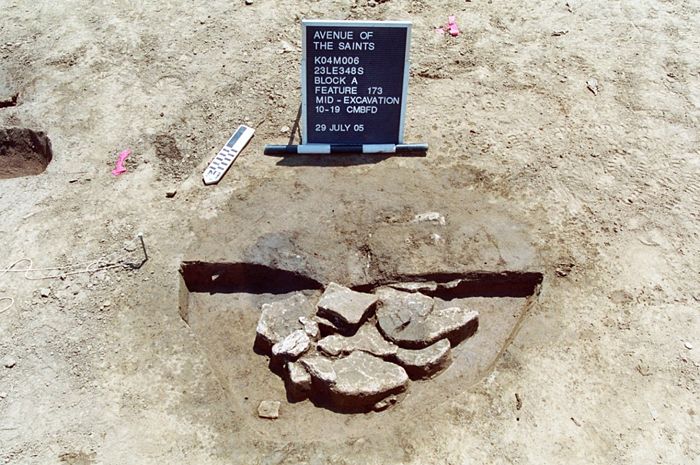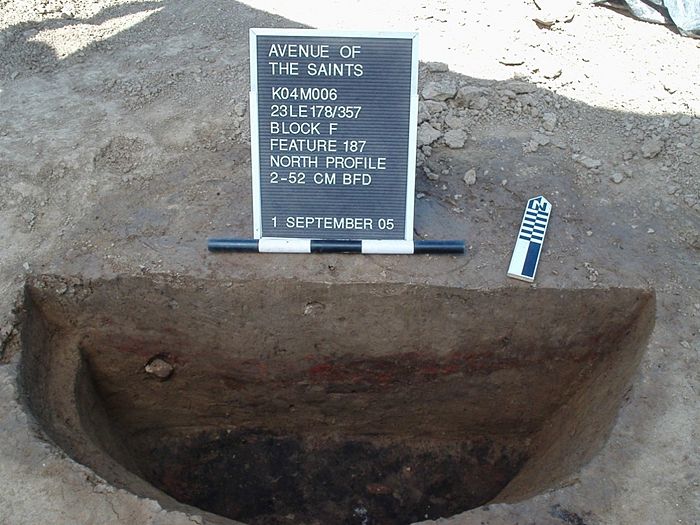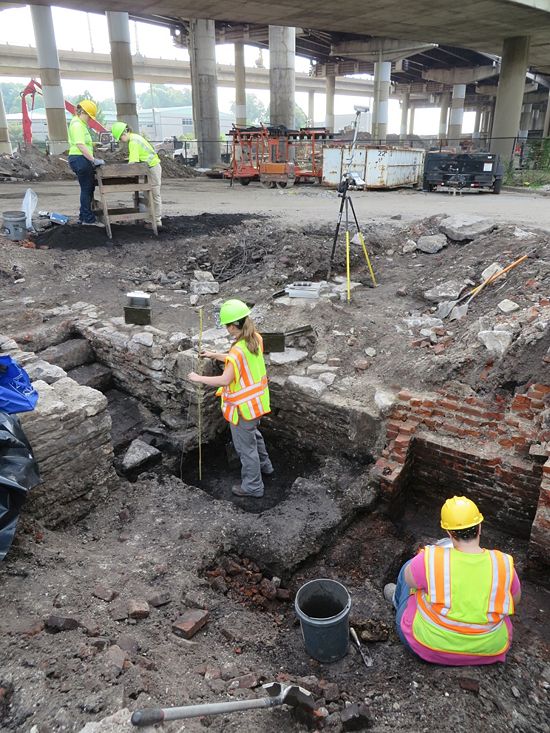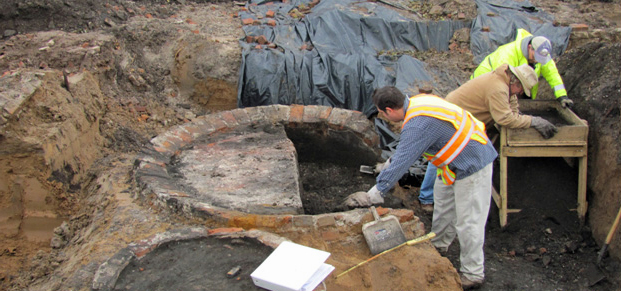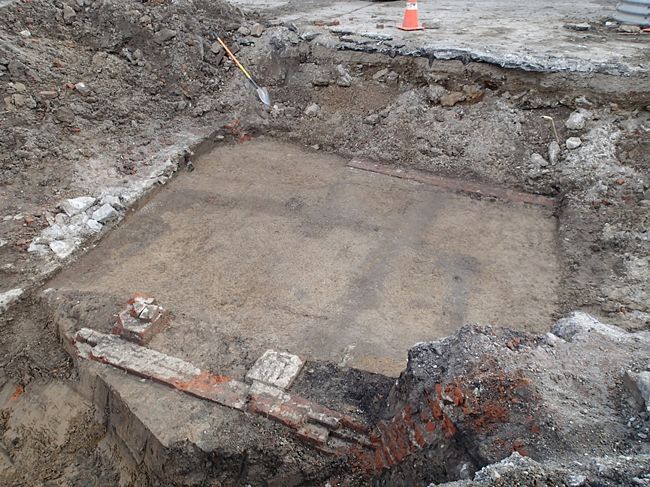Difference between revisions of "127.2 Historic Preservation and Cultural Resources"
m (updated links) |
m (→127.2.1 MoDOT Historic Preservation Staff: Per Historic Preservation, updated listing of staff members) |
||
| Line 35: | Line 35: | ||
==127.2.1 MoDOT Historic Preservation Staff== | ==127.2.1 MoDOT Historic Preservation Staff== | ||
| − | The [[media:127.2 staff | + | The [[media:127.2 staff 2016.pdf|MoDOT Historic Preservation staff]] is part of the Central Office Design Division. Staff archaeologists handle issues regarding archeological resources, while the architectural historians handle issues involving buildings, structures, culverts and bridges. The historic preservation staff also a computer graphics specialist who modify project plans for submittal to other agencies. The MoDOT historic preservation staff conducts cultural resources investigations, prepares recommendations based on these investigations, and reviews cultural resources work done by consultants. The Historic Preservation staff is also available to assist with public interaction including providing presentations or displays at public meetings or preparing brochures or handouts. |
==127.2.2 National Register of Historic Places== | ==127.2.2 National Register of Historic Places== | ||
Revision as of 09:32, 11 July 2016
| Additional Information |
| Borrow and Excess Material Areas |
| Design-Build |
| Missouri Historic Bridge Inventory |
| Missouri Historic Bridge List |
| Section 4(f) Evaluations |
MoDOT balances historic preservation concerns with the task of planning, designing, constructing and maintaining the state’s complex transportation infrastructure. MoDOT’s Historic Preservation (HP) staff ensures that no MoDOT job is denied federal funds or permits due to lack of compliance with historic preservation regulations.
The Federal Highway Administration (FHWA), as an agency of the federal government, has responsibilities for the identification, protection, and stewardship of historic properties in their control so future generations can experience our history. These tasks are codified in a series of laws and policies. Much of the responsibility to follow these laws has been delegated by the FHWA to MoDOT.
Section 106 of the National Historic Preservation Act, the primary historic preservation law, requires that MoDOT consider the potential impacts that any federally funded or permitted project may pose to significant cultural resources. Cultural resources include archaeological sites, buildings, structures (e.g., bridges), objects, or districts. The significance of a cultural resource is evaluated by applying a specific set of criteria that are set forth by the National Register of Historic Places. Cultural resources that meet the criteria of eligibility for listing, or already listed, on the National Register of Historic Places are referred to as “historic properties.” MoDOT must evaluate the potential impacts of a project on all identified cultural resources, regardless of their significance. For projects being developed, this process is typically started at the time the project manager submits a Request for Environmental Services (RES) to the Environmental-Historic Preservation Section.
Section 106 encourages, but does not mandate, the preservation of historic properties. The goal of Section 106 is to ensure that preservation values are factored into the planning process for all federally funded or permitted projects. Failure to obtain Section 106 clearance could jeopardize federal funding and permits for a project, which could result in project delays.
MoDOT may have historic preservation concerns for any project or activity that involves:
- Ground disturbances within existing or proposed MoDOT right of way or easements;
- Modifying or removing a bridge or culvert;
- The destruction, relocation or encroachment upon a building(s); and/or
- The purchase of property using federal funds .
These actions may be associated with initial highway construction, maintenance, or subsequent improvement activities. Even if a project plan does not include these actions, later contractor or maintenance tasks could meet one of these criteria. It is imperative that the Historic Preservation Section be involved in project determinations about cultural resources and be notified if cultural resources are encountered within job limits during construction or on highway property in general.
Contents
- 1 127.2.1 MoDOT Historic Preservation Staff
- 2 127.2.2 National Register of Historic Places
- 3 127.2.3 Historic Preservation Regulations and Laws
- 4 127.2.4 Project Information for SHPO Submissions
- 5 127.2.5 Time Lines and Schedules for Project Clearance
- 6 127.2.6 Landowner Permission to Conduct a Survey
- 7 127.2.7 Confidentiality of Archaeological Site Locations
- 8 127.2.8 Artifacts and Features
- 9 127.2.9 Historic Bridge Information
- 10 127.2.10 Alternative Financing or Partnership Projects
- 11 127.2.11 Construction Inspection Guidance
- 12 127.2.12 Uneconomic Remnants
127.2.1 MoDOT Historic Preservation Staff
The MoDOT Historic Preservation staff is part of the Central Office Design Division. Staff archaeologists handle issues regarding archeological resources, while the architectural historians handle issues involving buildings, structures, culverts and bridges. The historic preservation staff also a computer graphics specialist who modify project plans for submittal to other agencies. The MoDOT historic preservation staff conducts cultural resources investigations, prepares recommendations based on these investigations, and reviews cultural resources work done by consultants. The Historic Preservation staff is also available to assist with public interaction including providing presentations or displays at public meetings or preparing brochures or handouts.
127.2.2 National Register of Historic Places
The National Register of Historic Places is the nation's official list of cultural resources worthy of preservation. Authorized under the National Historic Preservation Act of 1966, the National Register is part of a national program to coordinate and support public and private efforts to identify, evaluate, and protect our historic and archeological resources. Properties listed in the National Register include districts, sites, buildings, structures, and objects that are significant in American history, architecture, archeology, engineering and culture. The National Register is administered by the National Park Service, which is part of the U.S. Department of the Interior.
Included among the nearly 79,000 listings that make up the National Register are:
- All historic areas in the National Park System;
- Over 2,300 National Historic Landmarks, which have been designated by the Secretary of the Interior because of their importance to all Americans;
- Properties across the country that have been nominated by governments, organizations, and individuals because they are significant to the nation, to a state, or to a community.
National Register properties are distinguished by having been documented and evaluated according to uniform standards. These criteria recognize the accomplishments of all peoples who have contributed to the history and heritage of the United States and are designed to help state and local governments, federal agencies, and others identify important historic and archeological properties worthy of preservation and of consideration in planning and development decisions.
Listing in the National Register contributes to preserving historic properties in a number of ways:
- Recognition that a property is of significance to the Nation, the State, or the community.
- Consideration in the planning for federal or federally assisted projects.
- Eligibility for federal tax benefits.
- Qualification for federal assistance for historic preservation, when funds are available.
127.2.3 Historic Preservation Regulations and Laws
The primary legislation that requires cultural resources investigations is Section 106 of the National Historic Preservation Act of 1966. Compliance with this law is required whenever a project uses federal funds or requires federal permits. Section 106 requires three things:
- 1. Identify Historic Properties – Determine project’s area of effect, identify historic properties, and evaluate historic significance;
- 2. Assess Adverse Effects – Assess if the project will have an adverse effect on historic properties; and
- 3. Resolve Adverse Effects – Avoidance, minimization, and/or mitigation of any adverse effect on historic properties.
There are additional historic preservation laws and guidelines that MoDOT must comply with. Potential project impacts to certain kinds of historic resources that are identified during project development may require the preparation of a Section 4(f) evaluation that requires comparison of costs and impacts associated with avoiding the resource. The Section 4(f) process states that an alternative that is generally similar in cost and constructability but avoids the significant resource must be selected whenever possible. Federal laws also require that American Indian tribes be consulted if a project will impact prehistoric burials or sites that the tribes may consider important.
There are two state laws that involve projects encountering human burials. The Unmarked Human Burials law (RSMo 194) addresses situations where activities impact prehistoric burials and previously unrecognized historic burials. The Cemeteries law (RSMo 214) addresses project impacts to cemeteries and historic burials that are marked by headstones, particular kinds of vegetation or local folklore. If burials or human skeletal remains are encountered during construction, construction in that area must cease and Historic Preservation Staff immediately contacted.
127.2.3.1 Missouri Unmarked Human Burials Law
If human skeletal remains are encountered during construction, their treatment will be handled in accordance with Sections 194.400 to 194.410, RSMo, as amended. When human remains are encountered, the Contractor shall first stop all work within a 50-ft. radius of the remains, and secondly, shall notify the MoDOT Construction Inspector and/or Resident Engineer who will contact the Historic Preservation section. Historic Preservation staff will in turn notify the local law enforcement (to ensure that it is not a crime scene) and the State Historic Preservation Office (SHPO) as per RSMo 194 or to notify SHPO what has occurred and that it is covered by Missouri’s Cemeteries Law, §§ 214. RSMo. If the contractor is unable to contact appropriate MoDOT staff, the contractor shall initiate the involvement by local law enforcement and the SHPO. A description of the contractor’s actions will be promptly made to MoDOT.
If the human remains are prehistoric, the agency must consult with modern Indian tribes to determine the most appropriate treatment of the remains. Tribal consultation can be a lengthy process taking several months and may result in the conclusion that the remains should be preserved in place and construction plans changed to facilitate their preservation.
127.2.3.2 Missouri Cemetery Law
Missouri’s Cemeteries Law (Chapter 214. RSMo) requires that the local Circuit Court be notified whenever marked human remains are encountered with the court assuming jurisdiction of the remains if a next-of-kin cannot be located. The process also begins with the MoDOT Historic Preservation Section being notified immediately of the presence of a known or suspect grave site. The MoDOT Historic Preservation Section will notify MoDOT Chief Council’s Office CCO), who then contacts the court officials. Under the direction of CCO and the Circuit Court, an undertaker or archaeologist will remove the remains with the remains moved to a new location. The courts may require that MoDOT attempt to notify relatives of the deceased through various forms of the media (typically local newspapers).
Sections of Chapter 214, RSMo that have applied to MoDOT projects are:
214.041 – Construction of roads prohibited in cemetery—exceptions: “No road shall be constructed in any cemetery over a burial lot in which dead human remains are buried. Temporary access routes over burial lots may be used in the operation or maintenance of the cemetery or used in the construction of cemetery improvements or features. This section shall not apply to private or family cemeteries, as described in section 214.090.”
214.131 – Tombstones, fences, destroying or mutilating in abandoned family or private cemetery, penalty--abandoned or private burying ground, defined: “Every person who shall knowingly destroy, mutilate, disfigure, deface, injure or remove any tomb, monument or gravestone, or other structure placed in any abandoned family cemetery or private burying ground, or any fence, railing, or other work for the protection or ornamentation of any such cemetery or place of burial of any human being, or tomb, monument or gravestone, memento, or memorial, or other structure aforesaid, or of any lot within such cemetery is guilty of a class A misdemeanor. For the purposes of this section and subsection 1 of section 214.132, an "abandoned family cemetery" or "private burying ground" shall include those cemeteries or burying grounds which have not been deeded to the public as provided in chapter 214, and in which no body has been interred for at least twenty-five years.”
127.2.4 Project Information for SHPO Submissions
The submission by the Historic Preservation Section to the SHPO for project clearance minimally requires the project footprint on a topographic map. Most submissions also require a set of the project plans provided electronically for our graphic support staff to annotate with the results of our investigation. Plans do not need to be certified or final. Photographs of a project area or specific resources (most often buildings or bridges) also may be requested from the district. District staff may also be asked to provide contact information for the landowners and any information they may have regarding building, parcel, and bridge histories. When Section 4(f) properties are present, district will be requested to provide plans and tabulated costs typically for two to three avoidance options. District help may also be sought to help promote and advertise historic properties for relocation.
127.2.5 Time Lines and Schedules for Project Clearance
The length of time required to provide project clearances varies with the job. Many jobs are cleared on the information provided in the RES submissions. Other jobs may require moderate to intensive field investigations and may take many months to complete. Projects with significant cultural resources and/or agreement documents may take up to 18 months to complete. District priorities must also be reconciled with statewide priorities so the key to success is early and frequent contact with the Historic Preservation staff. Many field studies cannot start until landowner permission to enter their property is provided by the district and that process may delay the cultural resource field studies.
Agreement Documents
Agreement documents include Memorandums of Agreement (MOA), Programmatic Agreements (PA) and Memorandums of Understanding (MOU). These are negotiated and signed legal document among agencies and other consulting parties that may include Native American Tribes, communities and other interested parties (e.g. private foundations, not for profit organizations). Programmatic Agreements (PAs) usually list the process by which Section 106 responsibilities are satisfied for a particular project. PAs may identify how specific resources may be treated but they focus more on processes to be used and parties to be involved in the process. Memorandums of Agreement (MOA) may identify the processes to be used but typically focus more on how project impacts on particular cultural resources will be handled. The MOA may specify avoidance, preservation in place, or mitigation activities for a particular resource and often has a detailed treatment plan attached that details the activities that must occur. Failure to comply with the terms of an MOA may result in the cancellation of the agreement (potentially jeopardizing compliance with the Section 106 process) and may result in one of the parties suing the others for non-compliance with Section 106. Memorandums of Understanding (MOUs) are less common and typically are agreements between agencies about funding and responsibilities.
127.2.6 Landowner Permission to Conduct a Survey
It is the district’s responsibility to contact the landowner or tenant to obtain the right of ingress for Historic Preservation staff to conduct a cultural resources survey. Depending on project size, contacts can be made via phone calls or letters with a postage paid response card. Contacts may also be made at public meetings or public hearings. The project manager provides a written list (e-mail is acceptable) of landowners with their phone number, permission status (ingress allowed, denied, or unknown) to the archaeologist or architectural historian handling the job. A sample letter requesting permission and a brochure showing a typical survey are provided. For any specific questions by a landowner, MoDOT historic preservation staff will make any secondary contacts. It is strongly recommended that the project manager work with the historic preservation staff to ensure correct information is conveyed to the landowner and, in some cases, to streamline the contact process to include only parcels of concern.
127.2.7 Confidentiality of Archaeological Site Locations
Some information, such as the location of archaeological sites, is considered confidential and is not for public release. This protects the site from looting, the landowner from trespassers and MoDOT from liability concerns. Archaeological site locations are not included in displays for public meetings and public hearings or otherwise disclosed to the general public. It is strongly recommended that inquiries regarding archaeological site locations be forwarded to the Historic Preservation Section for response.
127.2.8 Artifacts and Features
Prehistoric artifacts may consist of stone tools such as "arrow heads", flakes of chert from the manufacture of tools, pottery, bone or mussel shell concentrations. Sometimes artifacts will appear in a "feature" such as a hearth or storage pit that may include a distinct outline, charcoal, and mottled soils. Historic artifacts may include bottles, broken china, nails, window glass and features such as old wells, cisterns, foundations, root cellars or privy pits. When in doubt whether or not artifacts found during construction constitute an archaeological site, MoDOT Historic Preservation staff is available to examine the finds and determine if further investigation is warranted. If the artifacts indicate an important archaeological site, HP staff will work with construction personnel to avoid or minimize disruption to the project. Sample artifact types are illustrated below.
Examples of Prehistoric Artifacts (from the Avenue of the Saints Project)
Examples of Historic Artifacts (from the Mississippi River Bridge and Poplar Street Bridge projects)
Examples of Prehistoric Features (from the Avenue of the Saints Project)
Examples of Historic Features (from the Mississippi River Bridge and Poplar Street Bridge projects)
As noted above, MoDOT archaeologists will work with project personnel to avoid or minimize disruption to the project while satisfying Section 106 requirements. Failure to report a find during construction can result in adverse publicity for MoDOT and create greater delays for the project as other regulatory agencies may become involved.
127.2.9 Historic Bridge Information
There are about 24,000 bridges in the state (state, county and city bridges). The 1996 Missouri Historic Bridge Inventory survey evaluated approximately 11,000 of them that were built before 1951. About 1,800 of these had some potential for NRHP eligibility and were researched in more detail. Of these, 399 were considered possibly eligible, eligible or listed on the NRHP. In 2003, a Programmatic Agreement between the MoDOT, FHWA, State Historic Preservation Office and Advisory Council on Historic Preservation accepted the results of Fraser’s 1996 survey and the 399 most significant bridges became the Missouri Historic Bridge List (with some modifications). That same year the Missouri Historic Bridge Management Plan outlined a strategy for dealing with historic bridges on the list.
Additional information on individual bridges can be found at BridgeHunter.com. Also, Context for Common Historic Bridge Types is available for reference.
127.2.10 Alternative Financing or Partnership Projects
MoDOT may participate in a project in which an off-system or private partner may fund or build a project. FHWA has indicated to MoDOT that they expect all activities on property that ultimately will be incorporated into the MoDOT roadway system to comply with all appropriate state and federal historic preservation regulations and requirements (Section 106 and Section 4(f)). Projects not incorporated into the system (e.g. a tunnel under a road or a bridge over the road) may also require Section 106 compliance. Thus on a project that will include MoDOT and non-MoDOT right of way, MoDOT will ensure that only the MoDOT portion of the project complies with all historic preservation requirements. It will be the responsibility of the other partners to ensure that the non-MoDOT portion of the project complies with appropriate historic preservation requirements. Although not required, it often is wise for project partners to ensure that their portion of a project complies with state and federal historic preservation requirements since funding and MoDOT-non-MoDOT project limits may change in the future.
127.2.11 Construction Inspection Guidance
Mitigation by data recovery is usually completed prior to construction if the presence of cultural resources is known. If artifacts are discovered during construction activities, the Historic Preservation section must be immediately notified. This will allow an inspection of the site by MoDOT HP staff to determine if further investigation is necessary before construction activities continue.
Sec. 107.8.2 and Sec.203.4.8 of the Missouri Standard Specifications for Highway Construction require the contractor to take steps to preserve any such artifacts that may be encountered and to notify the MoDOT Construction Inspector or Resident Engineer of their presence. If it is necessary to discontinue operations in a particular area to preserve such objects, this section of the specifications is basis for a work suspension. In order to ensure compliance with applicable state laws, the MoDOT Construction Inspector or Resident Engineer cannot release remains or artifacts, or allow the contractor to disturb the area within the 50-ft. buffer space around these discovered items, until after consultation with MoDOT HP staff and until after all applicable requirements from FHWW or SHPO have been addressed.
127.2.12 Uneconomic Remnants
MoDOT considers impacts to cultural resources on uneconomic remnant and excess right of way parcels previously purchased by MoDOT for prior to their sale or disposal. If these parcels are identified early in the project, that information should be provided to the Historic Preservation Section in order that those areas are included in the initial survey of the project area. Consideration of the entire parcel to be acquired during the project development process may avoid additional trips to the project area and ensures that late discovery of significant cultural resources will not endanger any agreements between the MoDOT, SHPO, FHWA, other state or federal agencies, and the landowner. If the parcels are being bought using federal funds they must have a Section 106 survey before being purchased.


